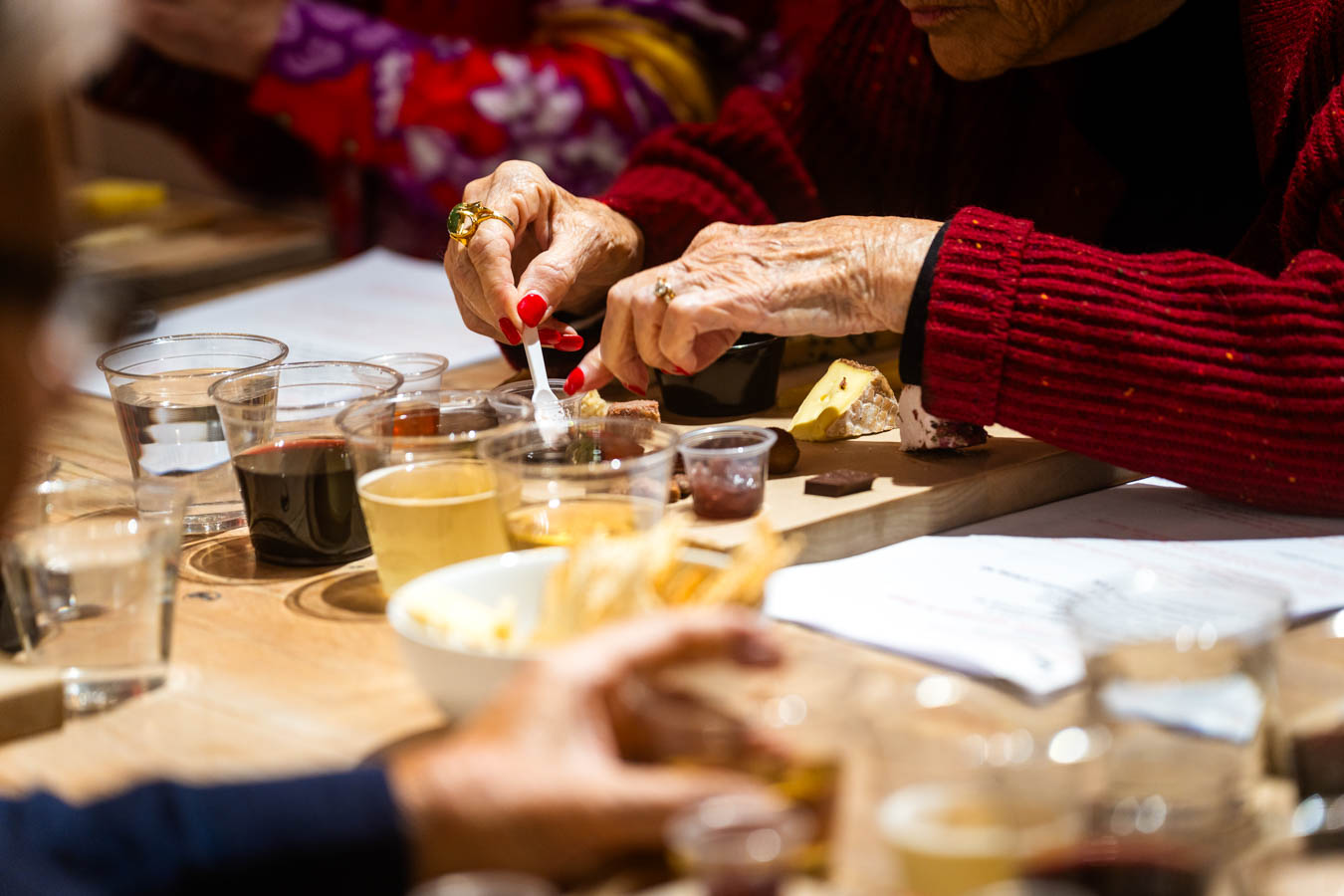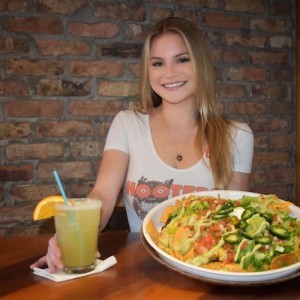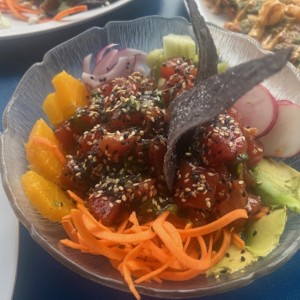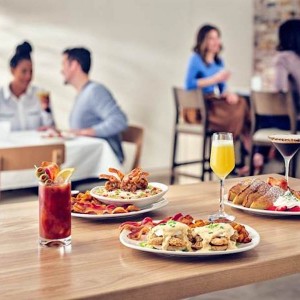In 2012, 24 eager attendees crowded the small space at Artisan Cheese Company’s former Main Street location, nibbling on 18 different varieties of cheese presented on paper plates at the store’s first class. When students posed a question for then-novice cheesemonger and shop owner Louise Converse and her team, she pointed to a blackboard reading “Owners in Training” that was displayed behind the counter. “I didn’t know what I was doing, and I made so many mistakes,” says Converse. Over the years, she has learned the recipe for an engaging and informative curriculum. “Now we do eight cheeses because, with any more, we’ve probably lost the room,” she adds. “We can do enough and explain enough with eight, hitting all the categories.”
A lifelong food lover, Converse, originally from England and Scotland, spent years frequenting cheese shops in New England, where she once lived and worked. After falling in love with Sarasota, she opened her store, hoping to build a community around food in a city without an establishment dedicated to the product. “When I would go to many cheese shops, I would be so intimidated by the language being used, and all the different shapes, sizes and animals,” she says. “Once I decided to open my shop, I wanted to take away the intimidation from cheese and introduce Sarasota to a proper cheese shop, with hand-cut-to-order farmstead and artisanal cheeses.”
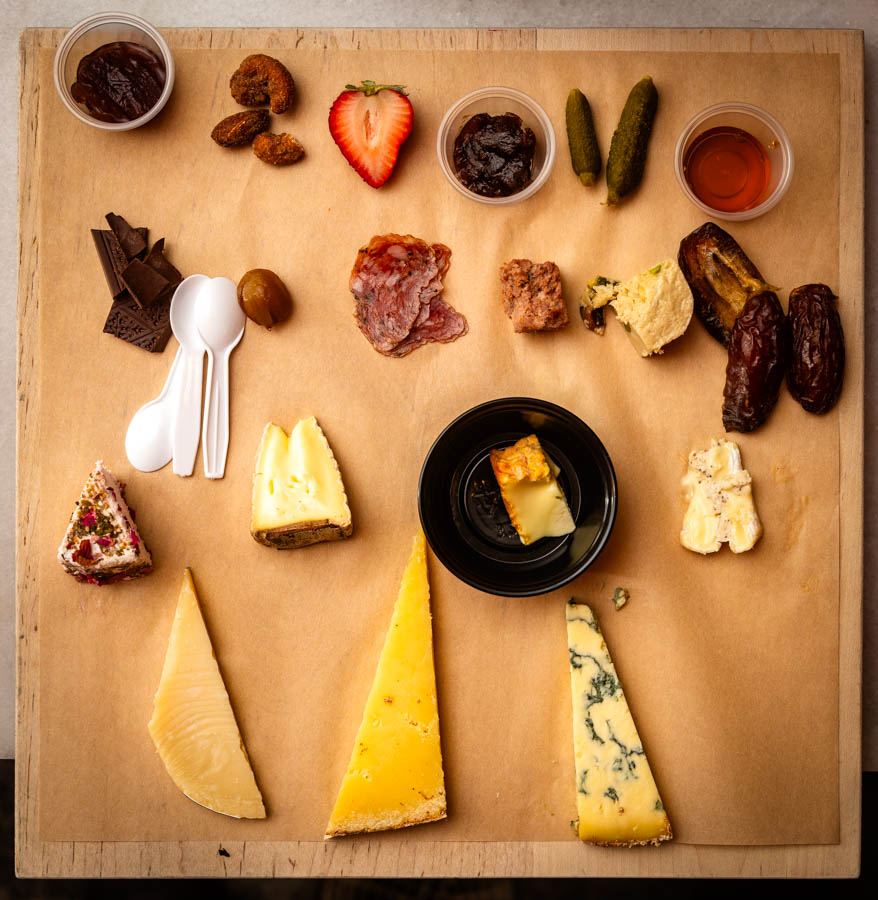
While running the shop, Converse was inspired to start hosting cheese classes. “I realized that people wanted to learn. I had gone to classes up north and I found them fascinating. It’s a way of learning about this alchemy that is this magical cheese,” she adds.
As the class gathers around a long table, each participant finds a seat at a board laden with eight types of cheeses and various pairings (like jam, walnuts, strawberries, salami and chocolate), along with small tasting cups of red wine, white wine and water. Sneaky hands inch toward the delicious morsels, but the instructors ensure that the evening will be best enjoyed without skipping ahead. Every student is given a cheat sheet, which breaks down the cheeses, pairings and wines they’ll be tasting, along with a crash course detailing what distinguishes a smooth and creamy young cheese from a sharp-edged blue (as well as the other varieties that lie in-between them). This handy guide includes a word bank of vocabulary terms with which the class is encouraged to vividly describe the appearance, aroma, flavor and texture of the cheeses.

Armed with this background knowledge, students embark on their quest through the land of blues and cheddars, starting with the basics. “We’re hoping that, by the end of the class, a person can identify the difference (by looking at, and certainly by tasting) between cow, sheep or goat milk cheeses, which are primarily the three types of animal milk you find here in America,” Converse says. The instructors explain that the digestive system of the type of animal producing the milk for a specific cheese often determines its color (a helpful hint when figuring out its origins). The instructors also give the students free rein to do what many have been taught to resist since kindergarten —play with their food. Like happy squirrels breaking into prized nuts, the students pull apart the cheese, allowing its aroma to escape. Before taking a bite, the students are told to inhale the scent, and they open their nostrils wide to capture every last bit. These steps are repeated for each of the cheeses presented, which range from young to blue cheeses. “It’s a progression, much like if you’re having a meal, you’d begin with lighter flavors and then end with a crescendo,” Converse adds. “It’s also how we want people to think when they’re building a cheese board—that they can begin on a softer, younger, lighter cheese and bring a person through a journey of different flavors, milk types, strengths, textures and countries, and end on a blue.”
In the spirit of exploration, the team at Artisan Cheese Company highlights the critical role that geography plays in the product. Students might hear the term “terroir” used when instructors talk about why cheeses from particular physical locations are distinct from one another. “Terroir” is French for “soil,” says The New Food Lover’s Companion, “though in the culinary world, (it) has an expanded meaning referring to a sense of place—the contribution of environmental factors that affect the final product, such as wine or cheese.” “Terroir” comes into play from the initial stages of the cheesemaking process to the final ones, where whoever purchased the product selects pairings to complement it. “Because the cheesemakers rely so heavily on where the cheese is from, what the animals are eating and the ‘terroir’ or the sense of place, you can have a cheese from Georgia, and if you have the same recipe, you couldn’t recreate that in Oregon (because the landscape is different, the animals are eating different food, and everything is completely different),” Converse says. “We also like the idea of ‘what grows together goes together.’ If you have a manchego, a true manchego that’s name-protected from La Mancha in Spain, then olives and wine from that region would be great pairings because the ‘terroir’ is a shared experience.”
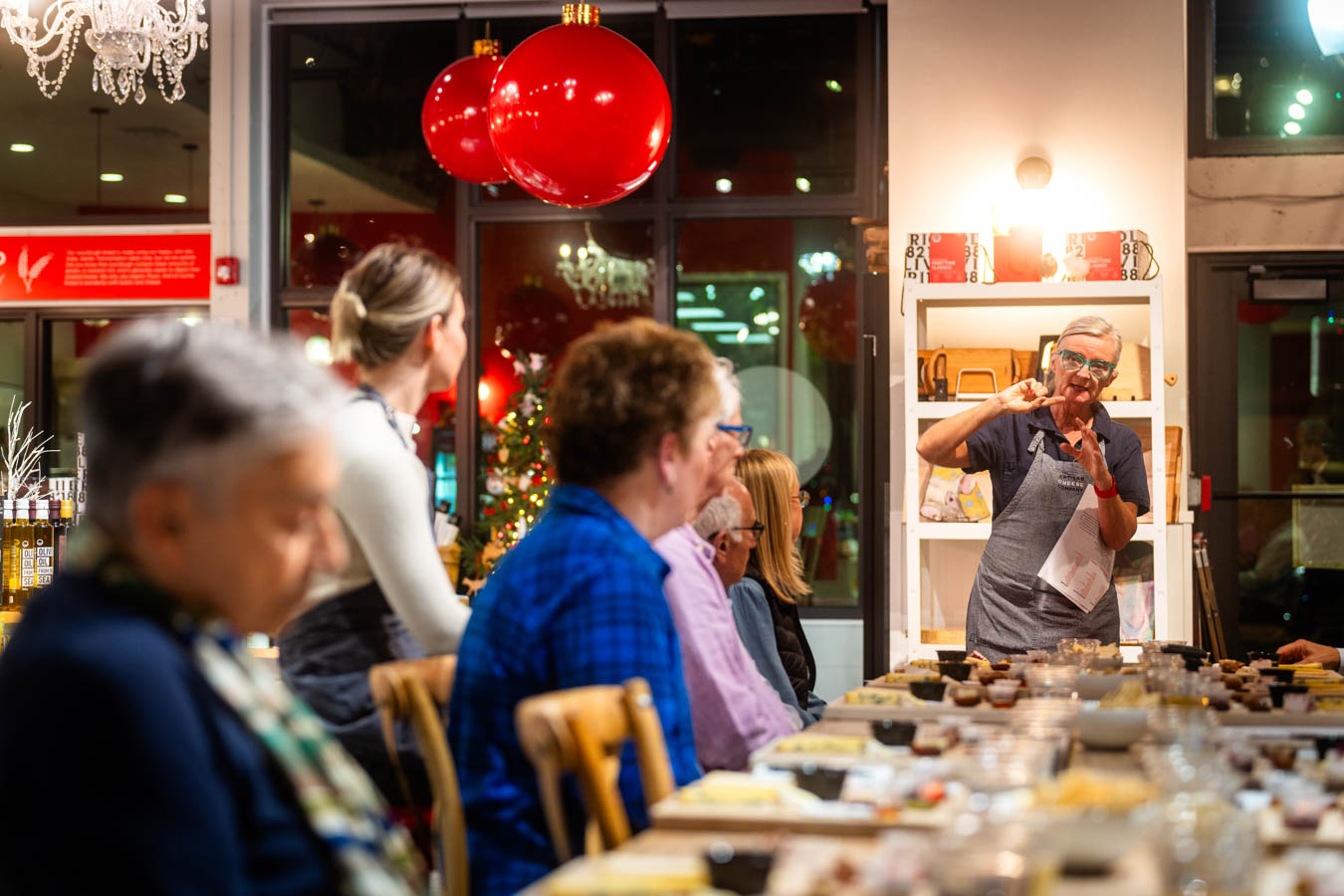
As they sample selections from Europe and the United States, students learn that a cheese’s geographical origin can affect its production from a legal standpoint. In the United States, raw milk cheese can be sold if it has been aged 60 days or more, which is not the case in Europe. “One of the biggest differences between American and European cheeses is the raw milk regulations. When you’re adding that extra heating of the milk, you’re taking away a little bit of the flavor. A lot of the American cheesemakers have to work extra hard to leave in as much flavor as they can, so their flavors, recipes and methods have to be on point,” says Converse, who carries American and European varieties and spotlights both in the classes.
“American cheeses are winning competitions in Europe, world cheese awards and blind tastings. There are American cheeses in Europe and Australia, so we are doing amazing things,” she adds. “American cheesemakers are so innovative. They don’t copy what has happened in Europe; they learn from it.” If someone wants to make cheese in an American location that is hilly, arid or mountainous, Converse explains that they might consider looking for inspiration in Spain (which has a similar landscape, where sheep thrive) and decide to make a sheep milk cheese. “American cheesemakers learn from their European counterparts, but they don’t simply copy the cheeses. It’s an homage, certainly, but it’s really about where that cheese is being made, and paying homage to that landscape and the skill of a cheesemaker,” she says.
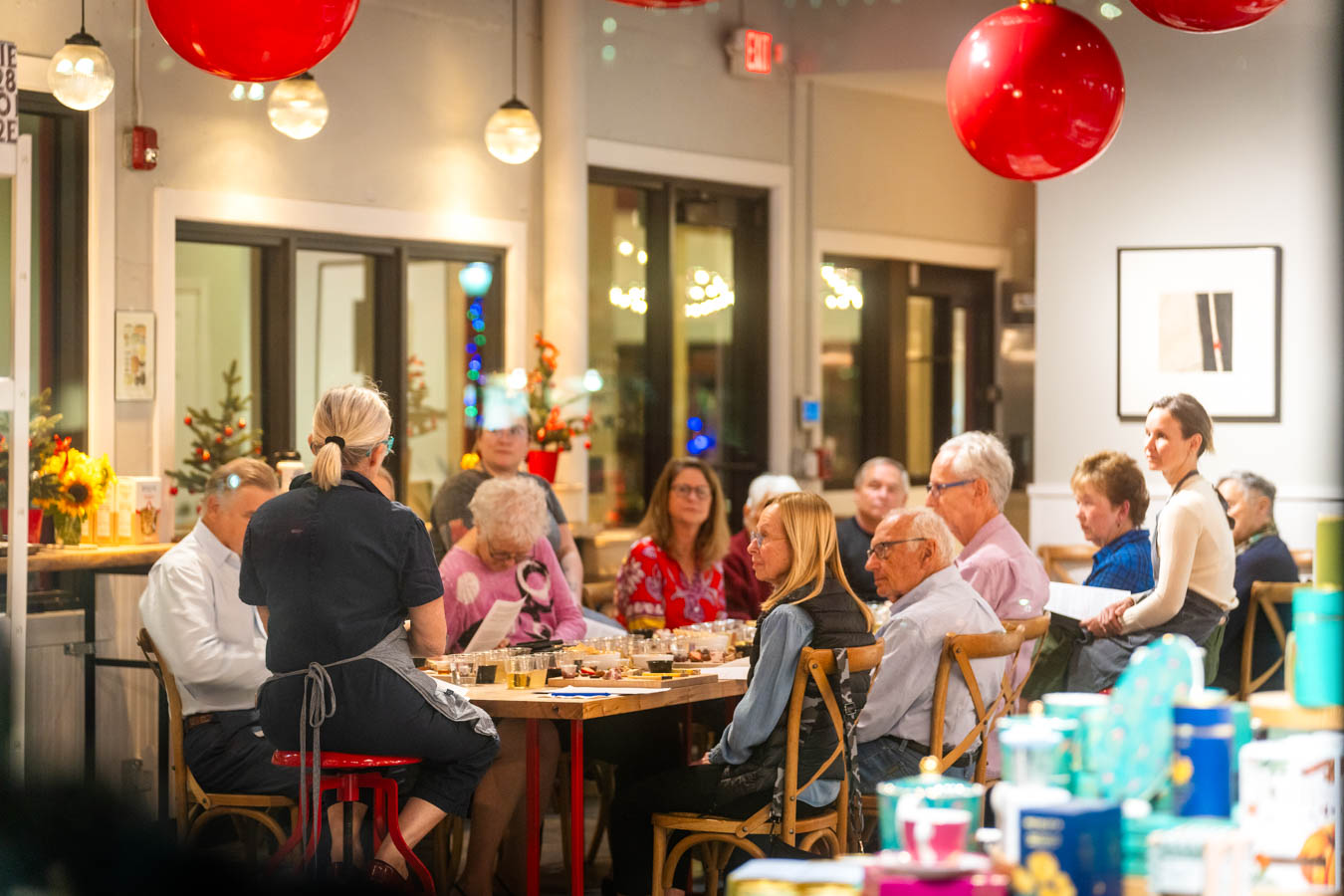
The behind-the-scenes efforts of the cheesemakers, and of Converse’s team, are unseen by the shop’s patrons. “Because I am the last point for the customer, and because the cheesemakers can’t be here, I am in service not only to my customers but to the cheesemaker to make sure that their cheese is in tip-top condition,” she adds, noting that, if she sells someone a cheese that is not properly cared for, the customer might come back to her shop but will likely never buy that cheese again. Acting as ambassadors, the members of Converse’s team share each cheese and its story with shoppers and students.
When the students have sipped every last drop of wine and only the rinds remain on their boards, they mill about the store to purchase more cheese. And they are shopping at an establishment that has been distinguished as one of the top 10 most iconic cheese shops in America in 2023 by Wine Enthusiast. “I just think of when we started in that cheese class with those 24 people and those 18 cheeses, not knowing what we were doing. We had a blackboard behind the counter that said ‘Owners in Training’ and, if somebody asked us a question, I would point to that thing, and now look at us. It’s only because customers keep coming back,” Converse says. “People who were in that first class still come into the shop and say ‘Remember me? I was at your first class!’”





